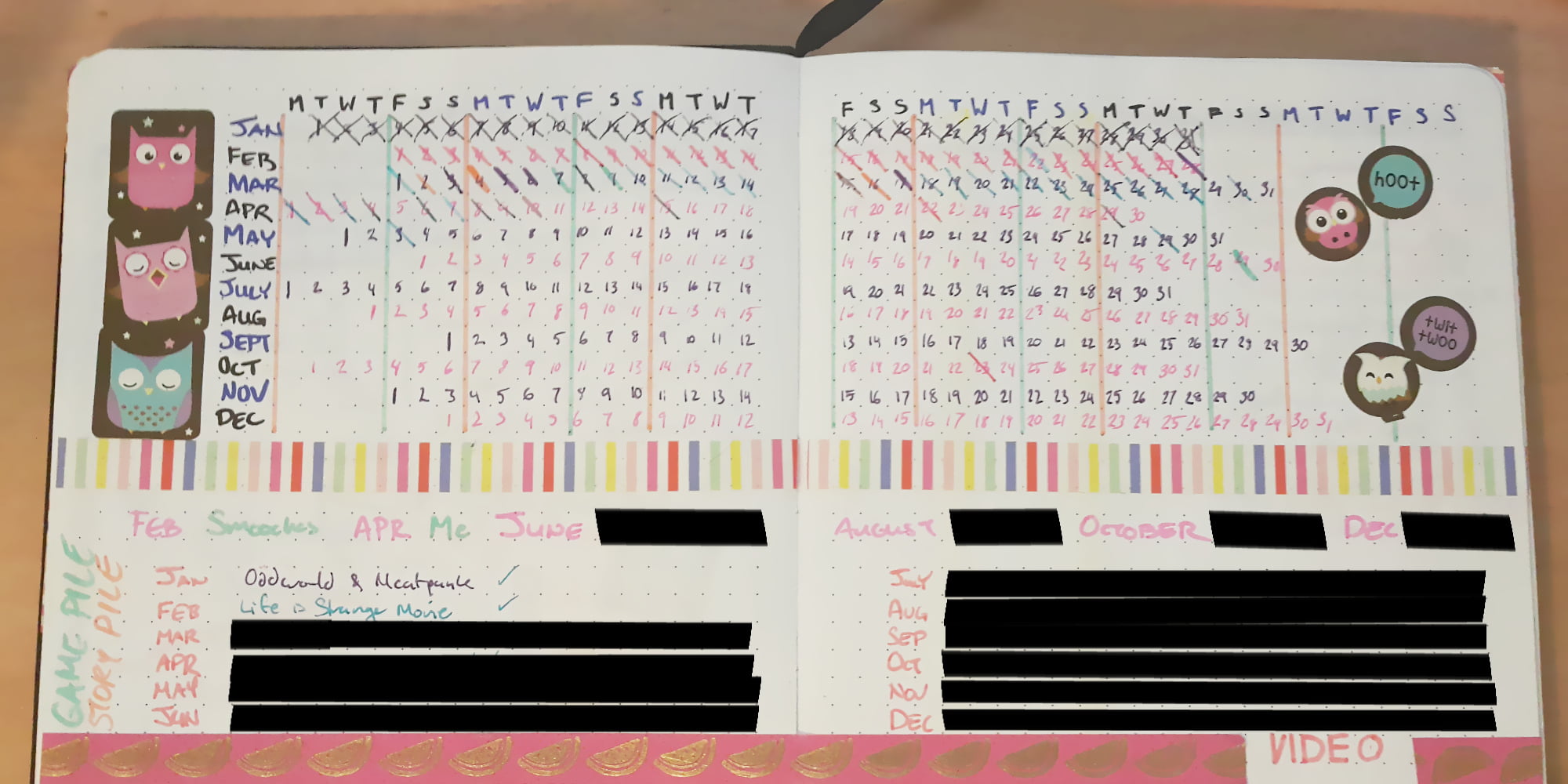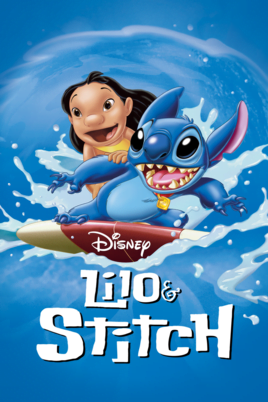April 2019 Wrapup!
I feel like this month whipped by especially quickly, perhaps because I had so many deadlines I was desperately trying to manage. It was however, lots of fun to do, and I want to do this kind of thing, give myself this kind of freedom more often.
Blog Posts
I knew going in that this month, as the month I gave my self permission to be salty and let out some topics that’d been cooking for a while, I’d have some corkers ready to go.
First of all we have the steadily brewing article tackling the idea that Gacha games directly map onto Magic: The Gathering that led to a host of articles last year about how corrupt and dangerous and bad Magic: The Gathering was, and wasn’t it like making children gamble? This is a position that’s pretty widespread amongst the so-called intellectuals of the gaming space and so I finally let some of those thoughts out. Since the article was written, nobody has come around to really argue with me on it, so I guess I’m right, and that means the whole conversation is done.
I also went in to the elbows on Exalted, a game that disappoints me as a game and disappoints me as a setting, but in some fascinating and strangely damaged way I can’t help but see the game it wishes it was and I wish it was that game, too. I first described the game at core, then went in on the Content Warning Fest that was the Infernals.
I also needed to invent a term, Narrative Adventure, to describe the category of all those games that reach from Zork through to Bandersnatch, so I wrote a long-form article about it that was, once, going to be a video, but editing together so many different videos seemed a bit of a bore and I wanted something easy this month. Maybe I’ll go back and turn that article into a video essay.
Video Work
Here’s my second attempt at play-and-talk gameplay. This one took some work – I actually recorded about seven versions of this video, because each of them was a different exercise in mic levels and trying to not sound moist. Still, this type of video is really fun to do.
Don’t worry, I don’t intend to go on like this endlessly! If I get more comfortable with this model, and get more subjects and games to play, I might do more of this. Any requests?
T-Shirt(s)!
I did a fair few shirts this month but the focal ones, the ones I consider ‘this month’s’ shirts are my Etoile Island sports team shirts which conspicuously tell Nerva and Grandville to get stuffed and also kind of disrespect Booty Bay.
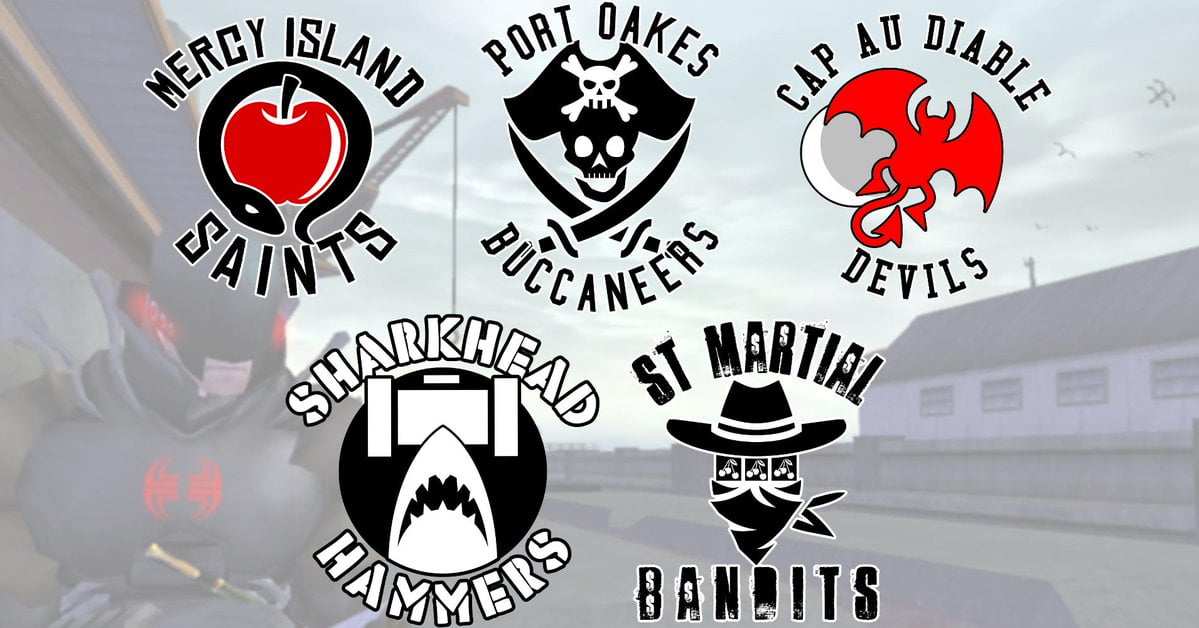
You can get these shirts on Redbubble or Teespring (Mercy, Port Oakes, Cap Au, Sharkhead, St Martial).
Games!
Hey, I finished up Hook, Line & Sinker! I got to place an order for it! I also finalised the printing for my shipping (as in boats!) game, Freight Expectations, and I wrote a bit about that and how to write a rulebook using Unit Operations.

Also, this month, I put out a set of articles explaining the translation of game design from the videogame Bloodborne to my 4th edition game expansion, Hunter’s Dream. You can check them out: Parts 1, 2, and 3.
Personal Life!
As I’m writing this paragraph, it’s a week before my birthday, and I’m making decisions about how to handle a document that needs to be done by the end of the month, and orders for a convention that’s happening at the mid point.
The thing is? The way things feel right now, I kind of feel like I won’t have anything interesting to say about my personal life this April. It’s a full schedule. I wake up, I read and I write, I go to uni to teach, I come home, I write for the blog. It’s a time when I need to keep myself focused so there’s not that much going on in my life.
I did however get news this month that wonderfully, my friend’s daughter can now, if put on her belly, drag herself around in a circle. That’s super cool.
Story Pile: Nation
It’s kind of sad but as a young man I really had no idea what people did to make conversation. My earliest fumbling attempts to talk to people about things are these cringe-inducing things where as an adult I either waited for them to test me on subjects I understood from school, or, worse, tried to tell them about a thing from church that they had to know.
I was really obnoxious.

Anyway, one of the things I learned people talk about, is media they like. And that meant I had to try and share the things that resonated with me, and inevitably, the one thing in this vein that didn’t wind up bringing more shame on me was the work of Terry Pratchett. The problem with recommending Terry Pratchett is that Discworld, his largest body of work, is 47 books long, the ones at the start are kind of ‘wrong’ at representing the brilliance of the later books, but the later books make reference to a world that the earlier ones define, expanding on the complicated world that even Terry was kinda winging it through. No matter how excellent Discworld is, it’s not a book you can give someone, it’s a homework assignment. There isn’t a really simple, singular work to hand someone and say ‘this is a way to enjoy this author and learn if you like work they do,’ not in the Discworld books.
How wonderful then, is it to have the book Nation to share.
Hunter’s Dreams – Trick Weapons, Part 3
This is more work on Hunter’s Dream, a 4th Edition D&D-compatible mod made to enable a Bloodborne style of game, where players take on the role of hunters, who have to first research their prey before going out to the tactical combat stage of things where players get to have cool fights with werewolves and whatnot.
Last time, I discussed how 4th Edition D&D’s weapon system works, and today, I’m going to lay out some basic ideas of actual mechanics for use in Hunter’s Dream.
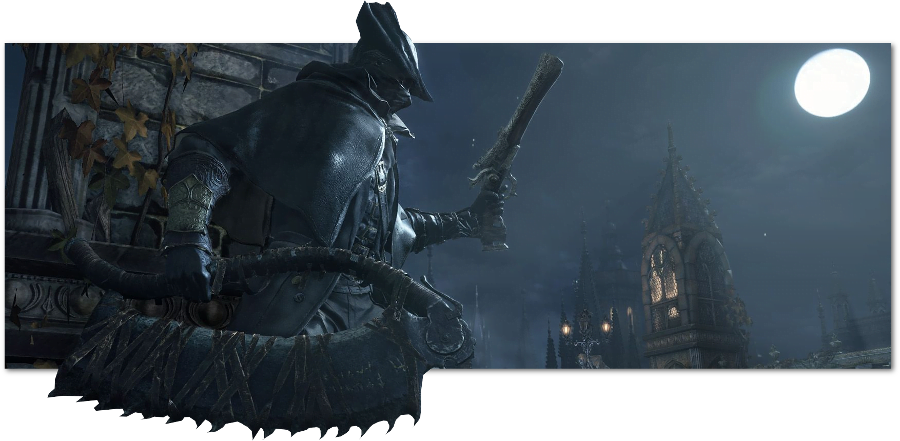
Birthday Post
It’s my birthday, when this goes up. Hopefully, I’ll be asleep, but odds are good I own’t be, because it’s a Friday night-morning for me, and who am I kidding, I stay up late and when it’s almost time for a blog post to drop, I go ‘aw, yeah, you know what?’ and it’s fun. It’s fun. We have fun here.

Anyway, it’s my birthday, and that means that hypothetically, it’s a time when you might want to buy me a present, or make me a present. I don’t necessarily think you should. After all, there are charities that deserve your money; I have a Patreon you can be contributing if you want to support my work; and I know a number of you reading this are not in any position to give gifts, and now my mentioning it can be guilt-inducing. Don’t worry about it. This is about something else.
Weirdly, this is about me.
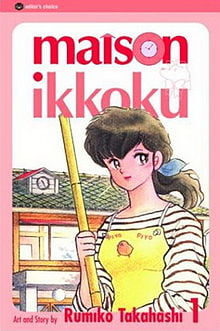
I have a problem I think of as ice cream indecision. It was first codified to me by the work of Rumiko Takahashi, in her manga, Maison Ikkoku. If you haven’t read the series, don’t worry about it, the basic gist is there’s a man in it who has a hard time committing to a decision. It’s told with a metaphor of a scene, where as a little child, his grandmother offers him one of two ice creams. He can have one flavour, or the other. In either case, the ice cream is going to be delicious, it’s not a serious concern: But he spends his time umming and ahhing between the two that it stresses him out and he can’t decide before the two melt.
I think about this scene a lot. More than is healthy.
I’m afraid of spending gift cards. I’m nervous about using gifts. Fox has found one of the most effective ways to get me a gift is to just install it in my life and suddenly I’ll be using it and it’s great and I’m happy about it. Last year, Fox got me a pair of nice knives and a griddle plate for our oven and I’ve used them every single day since and I’m so happy I have them.
There’s a lot of things tied up here. Like, I imagine people browsing wishlists of mine with a wrinkled nose going ‘oh my god, he wants that? What’s wrong with him?’ And this keeps me from doing anything that could be perceived as Horny (For Capitalism) On Main. I’m afraid of being ungrateful, so I’m nervous of talking about gifts with anything but glowing praise, which means if I wished for something that turns out to later on suck, I’m left feeling I can’t talk about it. And as with many things, I’m afraid of whether or not I deserve gifts, and if it’s foul arrogance to suggest that hey, someone might want to buy me a thing, maybe?
Anyway, this list took a long time to compile, and part of why was because I didn’t want it to have just one or two things that were very expensive (to me). So here, check out some wishlists of things I think I might want and I don’t know if I want them, and even as I write this I’m trying to argue myself out of it.
- Amazon (And a special group of old D&D Books)
- Steam
- GoG
All of these companies, in some ways, suck. If you don’t want to buy anything from them, because they suck, that is 100% okay and I support your choices.
But more than any of this… I said I wanted some things. And that I can do that, and feel okay saying it (though I don’t know how okay about it I feel), well, that’s a step! It’s important!
Hey, happy birthday to me.
Game Pile: Yoshi’s Island
Released in 1995, Yoshi’s Island is a classic Nintendo platform game on the SNES and subsequently released on almost every online platform they made. It’s really good and I like it, so here’s half an hour of me playing it, and talking about games, empathy, and fluttering.
April Shirt: Etoile League!
I considered doing something special for April on this month of trying to express more of me. At the same time, I just couldn’t think of anything that worked – not really. That stuff doesn’t happen under pressure for me, and for a bunch of my shirts (like Ray of Tsunshine) where I want a copy immediately after making it.
Instead, then, something else. Someone else.
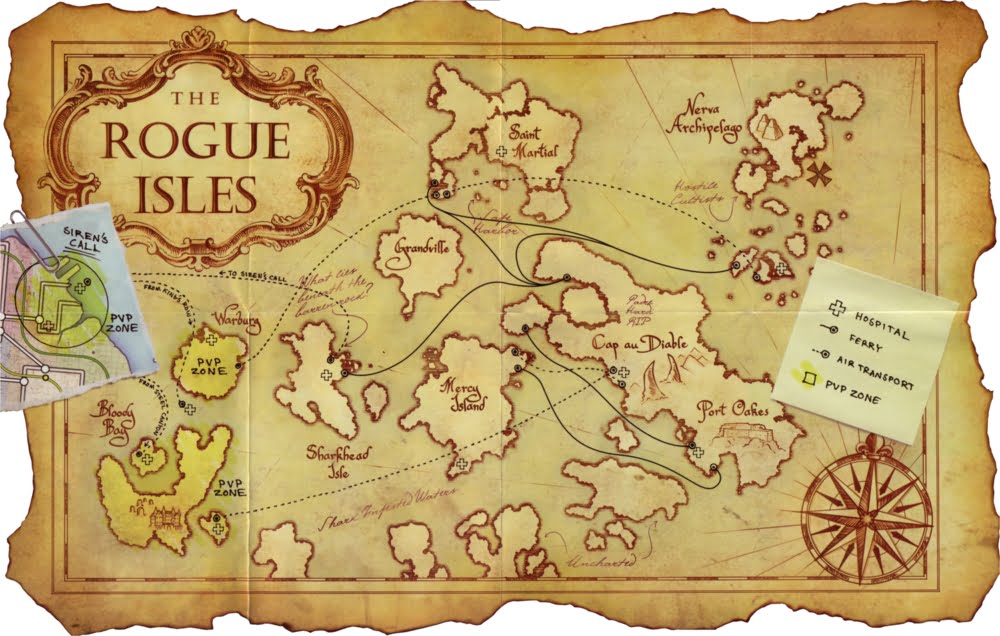
This week would have been the fifteenth anniversary of City of Heroes. I’ve already made shirts that celebrate the universities across Paragon City. If you know that setting, you’ll know that there’s a bias, where four of the Universities were in hero zones, and one in villain zones.
I always found the culture of City of Villains interesting – literally the culture. If you never knew the setting, there was one area, the Etoile, which was known as the ‘City of Villains.’ It was overseen by a corrupt superstate, and had all these different zones with really specific cultural notes. Mercy Island was plagued by poisoned water and a snake cult; Port Oakes organised crime and ghost pirates (seriously). Cap Au was a super-science city with a demon in the reactor powering it up. Sharkhead was a steelworks where the literal ghost of an unjustly slain labor unionist rose up to kill guards. Saint Martial was a casino town, with the wealthiest of jerks in charge.
And, well, based on a conversation with a friend, Jeb Wrench, about the nature of sports in poor communities near America, with limited space, we came to the conclusion that the kids of the Etoile probably play basketball. Where there is play, there is organised play. Where there is organised play, there will, eventually, be branding – even if it’s a bit cheap, a bit weak. And thus… we get this.
There was also Grandville, Nerva, and Bloody Bay but those are tricky and I’m already making five shirts here, dangit.
Exodus and the Column Of Poop
Hey, you know the Exodus of the Israelites? I have this thing about that and poop-
(Hang on, is it Passover today? It is? Uhhh… Maybe read this next week)
D&D Memories: Genshiken
I like looking back at character creation for RPGs. It’s creative, and expressive, and it has mechanical fine-tuning, I like that stuff. Mechanics give you things you must do, then concept and flavour give you things you can choose to do within that space, and that then means you get to pick what you express.
In a friend’s game, Genshiken was mostly expressing that I was watching a lot of Bleach back in the day.

Story Pile: Baccano
I so rarely get to enjoy having something I think of as great being one of my favourites.
I’ll often review work that I think of as being excellent, or important, or meaningful, and often with a lens that I try to position outside myself. I am after all, not a particularly useful or meaningful lens for other people to use, and that can often mean that work resonating with me is often a sign that it shouldn’t resonate with anyone else.
I don’t think anyone else was a screaming, terrified mess during The Little Mermaid, for example.
Imagine then my joy at finding a good anime – I know! – that means something to me – oh my goodness – and is actually good in general!
Baccano is a light novel series by Ryōgo Narita that was subsequently turned into an anime, and that anime is one of my three favourite anime series of all time. Set – mostly – in 1930s Prohibition-era America, Baccano! is told as a series of disconnected, out-of-order scenelets that keep three time periods going, and in each of those stories, sometimes two or three or even five stories going on all at once.
There’s a rollicking pace to Baccano! which splits its time lines across multiple light novel stories transpiring at the same time, almost all designed that knowing the end of one of the three stories will illuminate all of them, and therefore, rather than tell you in chronological order (which would probably still be plenty of fun) it instead ping-pongs you from moment to moment when characters are largely aware of things differently to you.
Remembering The Zandalari
Normally I bring up Zul’Gurub and Zul’Aman as dungeon raids mostly to beat up on more recent World of Warcraft experiences. It’s a little bit ridiculous of me to say that kind of thing, though, because WoW is not a discrete experience you have, it’s a pasttime you indulge. I’ve said in the past that if we replace WoW with tennis a lot of conversations seem extremely normal and less in need of some sort of personal justification.
Sometimes I’ll remark that people who want Vanilla WoW back don’t want Vanilla Wow, they want to feel like it’s 2004 again and they’re not worrying about mortgage payments. That’s a bit curt, though – hell, it’s downright insulting, really, because how different is my distaste for Modern WoW different, when I’m still complaining about an inability to recapture the way I felt in 2011 when World of Warcraft grinding kept me from despair during a period of long-term unemployment.
Hunter’s Dreams – Trick Weapons, Part 2
This is more work on Hunter’s Dream, a 4th Edition D&D-compatible mod made to enable a Bloodborne style of game, where players take on the role of hunters, who have to first research their prey before going out to the tactical combat stage of things where players get to have cool fights with werewolves and whatnot.
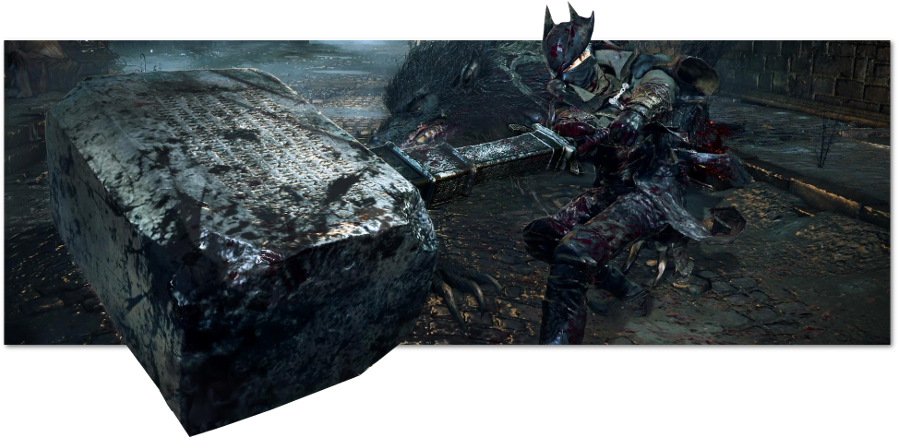
Last time, I discussed the basics of what a Trick Weapon does in Bloodborne, and today, I’m going to talk a bit about how 4th Edition D&D can handle some of those ideas.One of the reasons wanted to do this in 4th edition D&D is because the weapon system in 4e is really good compared to every other edition of D&D. Without delving into why and how other systems were bad (but they definitely were), let’s look at the things the weapon system in 4ed D&D has.
A 4th edition weapon has the following basic stats:
- a proficiency type (simple, military, exotic)
- a handedness (one-handed or two-handed)
- a range (melee or distance)
- a damage range (one or more dice representing the damage the weapon does)
- a proficiency bonus (determining any bonus to hit the weapon has)
- a weight (for encumbrance rules, which I’m no fan of, but this is our life)
- a group (to represent what other types of weapons it’s like)
- properties (one of a set of keywords that give the weapon specific abilities)
The weapon properties are as follows:
- Brutal
- Defensive
- Heavy Thrown
- High Crit
- Light Thrown
- Load Free
- Load Minor
- Off-Hand
- Reach
- Small
- Stout
- Versatile
Some of these keywords are very specifically utilitarian – a thrown dart would have Light Thrown, while a throwing axe has Heavy Thrown. A light thrown weapon uses your dexterity, a heavy thrown weapon uses your strength. Some of these, like Load Free and Load Minor relate to the unifying mechanics of the set they’re in (Crossbows and how you load new crossbow bolts).
The main thing about these keywords is that when you’re using the weapon, these keywords are very light on your cognitive load. Consider Defensive. A defensive weapon is as follows:
A defensive weapon grants you a +1 bonus to AC while you wield the defensive weapon in one hand and wield another melee weapon in your other hand…
Now, this has a few things that relate to it – it could be seen as kind of ‘choice intense’. You get an AC bonus with the specific condition presented here, but you need to pair a weapon with the defensive type, and you need another weapon, which must always be wielded in one hand. So hypothetically, any time you put this weapon down, your AC changes, and any time the weapon in your other hand changes, that also has a chance to change your AC. In a videogame with things like disarms or throwing weapons, this could be pretty complex.
In 4e though, a character is not likely to be disarmed; they are likely to configure how their character works, the way they approach combat, and once that decision has been made, this defensive weapon bonus just folds into the way the character works.
Brutal is my favourite. Brutal N means that when you roll a value of N or less on the damage dice, you can reroll it. This is a great mechanic because it can be a small nudge, statistically (a 1d12 weapon with brutal 1, for example, is an increase on average of .5 damage per attack) but it can feel really fantastic to cash in a 1 for even a 4. What’s more, some brutal weapons prevent feel-bad low rolls on ‘big’ weapons like the Executioner’s axe (Brutal 2), or intriguing, exciting experiences with weapons like the Mordenkrad (which rolls 2d6 – but both dice are Brutal 1).
There’s also the weapon group and proficiency type. Proficiency types push characters towards a certain general type of weapon based on their class’ background; rogues and fighters are likely to be familiar with most swords, for example, but clerics and druids aren’t. That means that you can gate access to things mechanically, which you can use to set the tone for some characters. Shamans and druids use clubs and staffs and spears, which aren’t that good as pure weapons, but it’s okay, because they’re not as likely to need them. If a player wants to reach out of their proficiency group, that’s fine too.
Finally, there’s the weapon groups – that is, the kinds of weapons these things are, what they’re like, and what they do. In older D&D editions, there was a trend towards trying to put a weapon in a big group (simple, martial, exotic) and that’s it; special training may refer to a specific weapon, but then you got weird things like how the Bladesinger would refer to a character using a longsword or rapier or elven rapier. Instead, in this case, weapons fit into general groups, and weapon styles or feats can refer to doing attacks with types of weapons. Most interestingly, weapons can have multiple groups – so if you build a character who can do things with polearms and things with axes, a weapon that is a polearm axe represents an intriguing opportunity to do both.
These are good properties because the mean that the experience of using these weapons is qualitatively different than in other systems. You set the weapon up, and then you use it – Notably, there are a lot of things these weapon properties don’t ask you to do.
- They don’t include a lot of memory issues
- They don’t ask you to commit within the action economy
- They can handle choices made during the attack, like versatile
- They don’t want to be too specific
There aren’t any weapons that have a unique property; none of these weapons have a unique mechanic. That means a weapon property wants to exist on at least two weapons. That’s good – that suggests any weapon property invented needs to be made with a mind to being reused. Anything too specific probably doesn’t want to belong here.
Next time, we’ll talk about how these two idea spaces interact.
Game Pile: Ace Attorney Investigations
Ace Attorney Investigations is a 2011 Nintendo DS game, best described as a Narrative Adventure game. See? I told you I needed it. Building on the success of previous Ace Attorney games, Investigations gives you space to wander around, all floppy-cravat style, and Investigate, as an Attorney would, or as you might imagine one would, if you had a very active and extremely silly imagination.
Term: Narrative Adventure
I need a term for something, so let’s invent it.
The term is going to use some language to represent a thing, and that language is going to need some history. That history is going to need some context, and some caveats, some asterisks, etcetera. Also, some of what I’m going to talk about can be seen as a polite disagreement with Ian Danskin’s videos on The Death of Guybrush Threepwood, essays from 2015.
Way to strike while the iron is gone.
What I want to talk about today is a particular family of games, or what we might know as a genre of games. Genre’s a beast of a thing to nail down, and I’ve said so in the past – it’s a well-established canard that ‘JRPG’ and ‘FPS’ are both genres even though one is defined by a country of origin and the other by a camera angle. Still, genre’s the term we have, so genre is what we must use, I guess, I’m only trying to invent one thing at a time here.
There is a type of game, and we don’t have a good term for it, right now, or at least, I haven’t seen one. I can’t tell you what I mean by naming the term we use for it, because if I do that you’ll immediately think of those games and only those games that are closest to it, and we want to keep our minds open here. We want to maximise the coverage of this terminology.
Hunter’s Dreams – Trick Weapons, Part 1
I started work on Hunter’s Dream back in January, with the basic idea being a way to play a Bloodborne style game set using 4th Edition D&D. The reasons are pretty easy to grapple with – starting with ‘I like it’ and moving on to ‘Bloodborne’s play experience is a tactical game of resource expenditure, not a story game of improvisation.’
Still, 4th edition D&D is a game of systems, and that means when you want to put something in the systems, you want to put in some rules. In Bloodborne, the trick weapons are a big part of the tactical experience, and they make the game feel that particular steampunky way. How then, do we bring that feeling into 4th ed D&D.
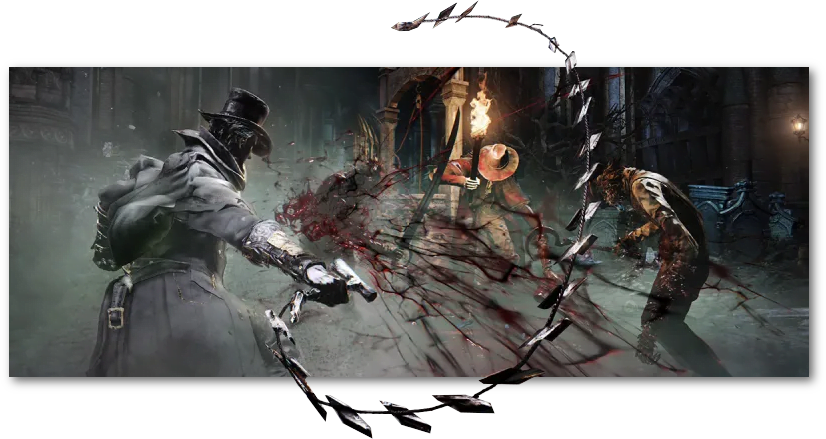
When looking at implementing these trick weapons in 4E, we want to consider what they do and how they do it. That sounds like basic stuff, but those questions are going to illustrate the difference between the two types of games and how I can make something that feels right in a different game.
Trick weapons in Bloodborne are weapons; you use them to attack opponents, destroy objects, and occasionally interact with environments in surprising ways – think about the times you cut a rope or knock down a hanging treasure. Broadly speaking though, the trick weapons are weapons, which you use to hurt people.
When you use them, you can change them from one form to another. Now here is where we can get a bit McLuahnish, and point out that medium and messages intertwine. See, Bloodborne is a videogame, and you play it with a controller. That controller has a number of buttons, and you, as a player, are expected to track maybe about seven to eight of those buttons at a time in combat. That means any mechanic you introduce, if it’s going to happen in combat, needs a button, and it needs a reliable button, because this combat is pretty high stakes. The game design is also what I call ‘fixed animation’ length – that is, when you commit to an action, you’re often stuck with it, and unlikely to be able to assert control over it along the way.
Following that, then, is that the trick weapons need to be weapons where your ‘trick’ doesn’t take a lot of buttons or fine customising. If you do those things, it’d take more time, and that might make it too inconvenient. With only limited inputs, then, the Bloodborne trick weapons are very binary. They’re either ‘on’ or ‘off’ – and you can swap them between one thing or the other in-combat. There are a few oddballs, of course, but generally, these weapons exist in form A or B, and in combat, shifting from A to B or vice versa results in a special attack.
Most of these weapons change in ways that reflect the technology of the setting. For some, the change is a big physical object shift; for others it’s turning on a special ability for the next hit. The weapons can’t be ‘normal’ weapons, even if they mostly resemble them – swords that become hammers, axes that become polearms, that kind of thing.
These two states want to be qualitatively different, in the context of Bloodborne; you’ll sometimes get different damage types, different speeds of attack, and different reach. In this game, those are very small spaces. Attack speed can be fractions of a second; Reach can be important down to similarly small units of distance.
To summarise:
- Bloodborne trick weapons are weapons
- They’re primarily used to hurt people and interact with the environment
- The trick of Bloodborne trick weapons is simple to use
- This differentiates them from conventional weapons
- There’s still room for mastery
- These weapons vary in how they attack
- Reach
- Speed
- Damage
- Special effects
This is our outline, the parameters we want to consider. Next time we’ll look at the challenges of setting this up in 4ed D&D.
MTG: Designing Tokens
Here’s a thing I’m working on.
If you play Magic: The Gathering, you’ll know that some cards create tokens – which are kind of cards that aren’t cards. Basically, a token is a thing that a card can create that isn’t represented by a card. If you don’t know Magic, this is probably a bit boring. Feel free to go elsewhere.
Anyway!
Story Pile: Young Justice (But Really Just ██████)
Young Justice is a 2010 animated TV show made by a collection of animators, artists, storytellers and writers that we tend to front with Brandon Vietti and Greg Weisman, for the Cartoon Network and at this point it seems that it’s something of a meme about just how very, very good it is. Talking to you about it like it’s some forgotten gem that is actually secretly amazing and great and you’d never have heard of it feels a bit silly. This show is on Netflix, it’s widely distributed and available and you, dear reader, almost definitely can check it out.
I’m not going to tell you anything you didn’t already know or couldn’t find out on your own and I get all itchy and awkward when I think that I’m putting on airs of liking something more obscure than it really is. After all, people like me grew up acting like we were the oppressed minority because we didn’t like what ‘the man’ put on radio, and instead listened to the things that were put on another, slightly different radio station, showing that we were, in fact, rebellious and different.
This self-feeding dialogue that there’s something countercultural about buying things from a slightly different multinational corporation always makes me uncomfortable about acting as if talking about a tv show or videogame is in any way illuminating of some obscure classic or enlightening you about some sort of fascinating garbage. I try to be as direct and honest as possible about my personal reactions to these things. With that in mind, I think Young Justice is really great. It’s got one great season and one kind of awkward season; as with almost all 2000s era animation it could have afforded a better budget and more chances to plan. You know, the Korra problem – if it’d been better made it’d be a better show.
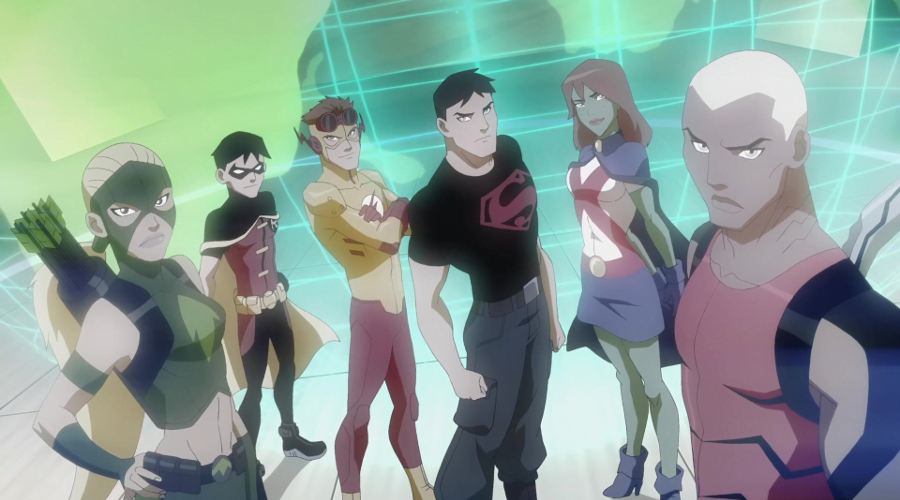
Nonetheless, Young Justice is a story set in the DC universe, with its superhero crew, that doesn’t need any other series as context, explains itself directly, gives fresh takes on a bunch of the characters if you already know them, and it’s basically one of the best ways to enjoy something that’s about the DC Superhero Universe without being mired down in ten miles of lore.
But we’re doing something a little different this time. I don’t want to talk about this series as much as I want to talk about something in this series, and I want to talk about the challenges of talking about it.
Don’t worry, this isn’t going to be heavy, this is just a lot of preamble for a lot of gushing.
But because this is different and because it’s nonstandard, I have a sort of special request. If you’re a woman interested in comics and superheroes, or if you’ve had The Genders, if you’re nonbinary, and if you’ve been on the fence about watching this show, wondering about whether or not there’s anything you want to see in it, I would ask you to check it out and come tell me what you thought about it.
Because there’s something I see in this, and I’ve seen someone else see it, but now I want to see who else sees it.
Okay, good? Good.
Nintendon’t Come To Europe
It’s an American internet, really. If you talk about videogames of a retro vintage, it’s taken as a given you’re going to talk about videogames made by Nintendo, for Nintendo platforms. I’ve been told it extends so far that you don’t say ‘Playing Videogames,’ if you speak to the 90s – you say ‘Playing Nintendo.’
I didn’t see a Super Nintendo in someone’s house until I was an adult, and it was a collectable. Yet my cousin, and a few people I knew from around school had, or rented, a Sega platform.
In case this is literally your first experience here on the blog: Hi! I’m Australian. This is about my youth in Australia. But it’s also about how the assumptions we use when we talk about media often shows things about who we are as media consumers.
Nintendo dominated North America throughout the 80s and 90s, winning what was at the time considered ‘The Console Wars’ against their rival Sega. Then in the early 00s, there really wasn’t a Sega to oppose, as the Saturn followed by the Dreamcast failed and the company making them started to disassemble its manufacturing base, moving into full-time production of bad Sonic the Hedgehog spin-offs and sequels. Thing is, that narrative is how things were In America.
Here in Australia, Sega was the thing you got. Sega sold better in Europe, too, and distributed widely there. Part of what helped Sega do well was the video rental network they were connected to – this is an ad from almost every VHS I remembered watching, distributed from every Video EZY I checked. Renting a Master System or Mega Drive was surprisingly cheap if you could stump the bond (and I could not and never did). This is why it’s very common for Australians of this age to mispronounce ‘Sega’ – because the ads all pronounce it wrong too!

In Latin America, it’s even weirder. Sega made deals to manufacture Sega equipment in Brazil, and that means that for Brazilians, Master Systems were really cheap. What’s more, that deal didn’t limit itself to the production that Sega was doing – which means that Brazil’s been making Sega Master Systems since – well, since the 80s. As technology has moved on, with the same fundamental architecture, what’s happened is that the Master System (a really good console!) has been instead getting smaller and more convenient.
Mailing and distributing these units from Brazil is apparently ferociously expensive – Brazil’s tariffs on entertainment goods are, I’m told, eyewatering, and piracy in the country is rife on anything that can run Linux. Still, it’s this fascinating little story of a place where not only did Nintendo not win the console war, the company they thought they’d defeated has lived on beyond them.
Is this news to anyone? No, not really. Most Americans I know are aware of these things. But what’s fascinating is that there are a number of Americans who don’t – and they’re always surprised to learn that the history of trade and distribution of videogames just wasn’t universal.
Bujo Module – Year Task Spread
Wow, yesterday was a bit much wasn’t it? Let’s wind it down a touch. Here, let me show you my Bullet Journal.
Hey!
That’s not weird!
Hey, I still use my Bullet Journal to track things. Fox got me a lovely new Bujo for Christmas last year, and I’ve been using the dot-grid system very aggressively to do things it’s harder to do on lined paper.
One module that I’ve seen and wanted to try out was a year long planner. If you had something you want to do every day or every week, or a tracker for a long-term pattern, then this is a great system for it.
The funny thing about Bullet Journal modules like this is I tend to just need to look at them and then they kind of explain what they’re for. This one’s for managing this blog, and since this picture has work done up until April, you might guess this was – well, recently. But it’s not, this was done in the first half of March.
If you want a closer look, click on it, it should open up in a new browser window for ya.
Game Pile: Exalted: The Infernals
First things first, before we go anywhere.
Content Warning
The gamebook I’m going to discuss here is shot through it with a bunch of stuff that’s just going to fall under the category of what I call ‘content-warningy.’ The Infernals is a book marinated in a needless ‘edgy’ nastiness that means a perfectly normal seeming paragraph about negotiating for barley can break out with a random reference to sexual assault.
It’s not even a single enclosed space – no singular concept, no page section. This isn’t like there’s one super horrible character, or one terrible scene. It’s worse than that, it’s that throughout this entire guidebook, there is a non-stop constant and oppressive threat that the book will bring up something unnecessary and gross, mistaking mentioning taboo things as wielding them well.
I have beeves about this book and yet also loves, but I want to warn you against reading it at random, because in its attempts to be horrifying and edgy with its ‘villainous’ content, there’s a lot of this book you kind of have to ignore. Normally, I’ll warn you about a thing, or a type of thing in a work, but in this case, I just want you to know up front I don’t think you should read this book. As a general rule.
I will not be talking about that stuff, except in a broad sense to criticise the thoughtless way this book uses these subject matters. I’m not going to trot out specific examples of things just to criticise them, but I am going to mention:
- Abuse and Abusers
- Self-Harm
- Sexual Assault spoken about callously
- Mental health and identity issues
- Anger and revenge
- Public executions
If you want to go elsewhere today, I am okay with that. Here, go somewhere else, look at something nice.
Continue Reading →MGP: Imbuing Ownership
Starting January 2016, I made a game or more a month for the whole year. I continued this until 2018, creating a corpus of 39 card or board games, including Looking For Group, Senpai Notice Me, and Dog Bear. Starting in 2019, I wanted to write about this experience, and advice I gained from doing it for you. Articles about the MGP are about that experience, the Monthly Game Project.
When I talk about my games there tends to be a split in game types, which tends to – but not always – lie along a price line. There are $10 games, which are made with a tiny number of cards, less art, and often a tight little system to play with. Some examples are Senpai Notice Me! and You Can’t Win, which are both excellent games I’m very happy with for how much they do with how little they’ve got room for. These games are almost like a unicycle, a tiny tight little system, and they’re mostly intermediary games, games that you play between other things. There are exceptions – The Botch, for example, is what I consider a mid-size game for its time and strategic investment, and Chin Music is a $15 game that nonetheless is playable with seven year olds, with almost no strategic depth or world-building.
The point is, that these games, we’ll call them the single wheel games, tend to be kind of easy to make, they tend to be a bit less demanding, and they tend to be faster to make. The games that take more time tend to have fewer mistakes in them that I think of as big. It’s easy for me to point out the problems of D-73C7 but it’s a tiny bit harder to talk about the problems in the games I think of as ‘medium,’ the games where I have stamped my name and a bit of my lore and my friends.
Burning Daylight is a game I love.
It’s a good game.
But I hate, hate, hate, how much better it could be.
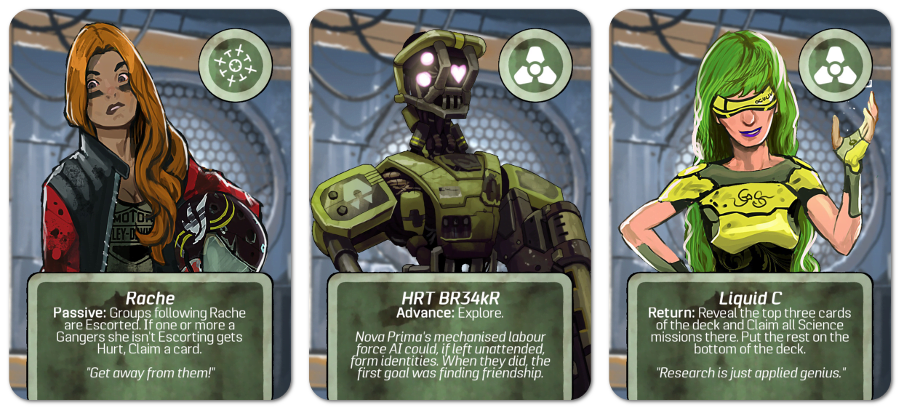 If you haven’t seen this game, it’s basically a Hand Management game. You pick a handful of cards that represent your gang, then you send those gang members out to do missions, each one capable of doing something on their own, and then after they go out, they do something, then they come home. You can send them out as a group, and if you do, they can do a mission.
If you haven’t seen this game, it’s basically a Hand Management game. You pick a handful of cards that represent your gang, then you send those gang members out to do missions, each one capable of doing something on their own, and then after they go out, they do something, then they come home. You can send them out as a group, and if you do, they can do a mission.
There’s a ton of stuff that’s just a little bit awkward about this game. The way injury works, the way the track progresses – players tend to want to move their characters differently to the way the rules work, which suggests that the rules I designed around were bad, and I should have been willing to pull them back. I still tangle with the feeling myself, if I should revisit the game entirely, strip back the rules, and redo a bunch of the cards? Maybe?
But that’s not the important thing. Those are small things, they are ways to make a better game out of the good game. There’s a fatal flaw in Burning Daylight, or rather, an overwhelming flaw that bothers the hell out of me, and it’s at the start of the game, you have to pick your gang members. You pick five cards and those cards are your gang. They’re yours.
When you first pick the game up, you have no idea what those gang members do, how they interact with one another, if they’re good, or what kind of mix of them you want.
I filled these cards with as much personality as I could, I strived to make it so that you could like this cast of gangsters, and then I created potential pitfalls for players who made bad choices. Which sucks, it’s such a bad decision.
If you pick a good, mixed team, and if you know how some of the characters work together, this game can be fun, but at that point, you’re not creating your gang for this game, you’re picking up a gang. I gave players a way to take ownership of the game in some way, and then I made it so they could do that wrong and that drives me batty every time I think about it.
Burning Daylight took me months to make. I bought stock art I loved, I edited and refined it, like the art I use for Sector 86. I live-tweeted so many stages of the design process; there was a time where it was actually strongly reminsicent of Arctic Scavengers (and … well… maybe), another time it was almost a box game with tokens and a bag buying system. The game that came out is full of lore I like, characters I love and it looks great…
… and I keep gnawing away at the ways I could make it better.
Doom’s Paratext
You know what, I haven’t taken a cheap pop at Doom in a few months, let’s go into the rich well of a game that my dad has never stopped playing since 1994.
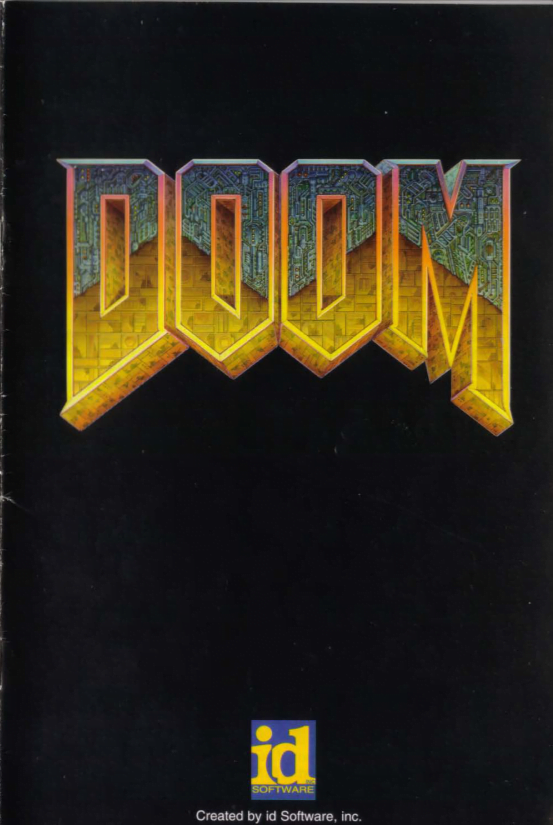
Okay, I’ve talked about text and paratext, in the past. The basic idea is that there’s stuff in the work, and that’s text, and then there’s stuff in the work surrounding the work, and that’s paratext. An example would be how the fact that a wizard named Dumbledore exists is text to the Harry Potter books, but that he just went to town on Wizard Hitler’s cock is part of the supplementary text to that from JK Rowling, and that surrounding commentary is a form of paratext.
And let’s make it clear: Your gentle loving grandpa figure Dumbledore absolutely fucked Wizard Hitler.
Anyway, the distinction is between what counts as text versus what counts as paratext is generally centered around a specific way of experiencing a work. A movie that adapts a book can be seen as paratext to that book, but it can also be seen as its own text. The book can be seen as paratext to the movie, too. A book and a movie, though, are somewhat equal in their textual weight (except to extreme cinephiles and bibliophiles, who are both pretty silly).
What though, about a game?
People consider the reading material that comes with games as pretty secondary. Heck, superfluous. Back in the day, they were text file that came with readers, and you could definitionally not read the text file while you were playing the game. It seems pretty easy then to assess the game as the text, and there’s a lot of people who will stand firmly by the idea that the play of a game is the important thing (hullo, ludology-narratology debate).
![]()
Thing is, though, there are a lot of games that have well-established, well known ‘stories’ where the story as we understand it appears not in the game, but in a booklet that comes with the game, or a text file or even ordering info that comes with the game. Particularly, to use a high profile example, Doom is a videogame that has almost no description of its story in the game itself. There’s nothing you’d consider establishing – it just drops you into the game in Knee Deep In the Dead and, that’s it. The idea that you’re a Space Marine, that you’re deployed on Mars for killing a superior officer (pfft), that you’re the last person left after a teleporter accident, the integral identity of how Doom‘s story works, that’s all in the manual.
This isn’t atypical though.
Most videogames don’t have the room, not back then, to properly show you their story in play. It just takes too long. Lots of the time, you don’t even know what your goal is until you reach it!
Anyway, Doom’s plot is Paratext and Dumbledore sucks Hitler dick.
Making Light Novel Covers
Hey, you know those Light Novel covers I make?
I started making them as a joke, and that joke showed a receptive audience. Since they were so easy joke for me to make, and making them helped to inspire the creation of the kind of Light Novel they suggested, I figured it might not be a bad place for you to start on that kind of thing if you want.
Here’s a breakdown of what goes into the making of this cover:
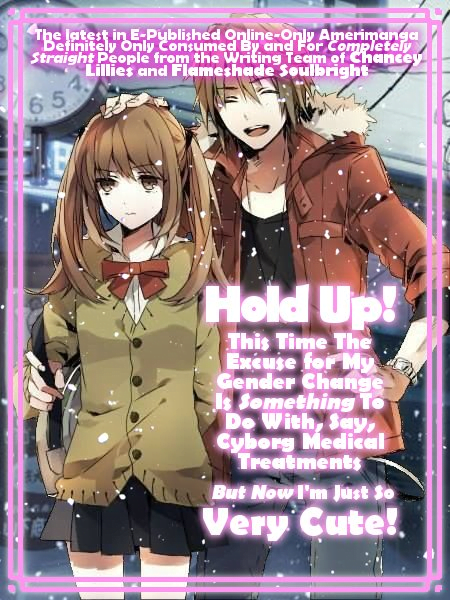
Story Pile: Transformers Animated
As a boy of my age I feel it seems only natural that I would be a fan of Transformers, one of the franchises from my youth that somehow managed to be acceptable in a landscape of anti-fun fundamentalism. Perhaps it was something about the fact that they were all robots-that-turned-into-things, or maybe the fact that the toys were honestly really expensive for my childhood experience, but somehow, I was able to get into Transformers, in the fashion of someone who read all the lore he could find in the dollar shops and salvo stores.
The actual TV show was screened at times I missed, and the movie was important to my upbringing, but it wasn’t really until I hit adulthood that I was able to watch the TV series that Transformers had as their extended commercials. This meant that I got to see the best one.
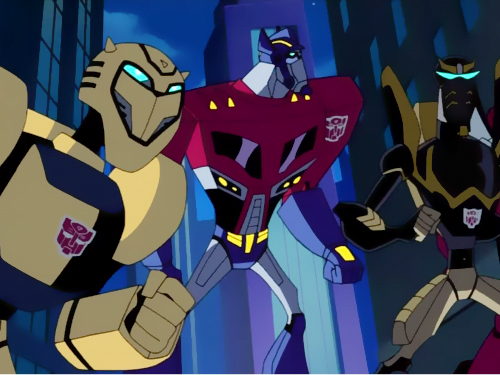
Transformers Animated was the last pre-Bayformers animated series, and there was, at the time, some rumbling that the series got kicked in the neck because it was trying to clear toy shelf space for the movie tie-ins. This is probably nonsense, but it still helped to fuel some resentment towards the (actually also quite bad) live-action movies. And that’s a shame, because my first feeling about Transformers Animated when I bring it to mind should not be, if I had my preferences, any kind of spite or sadness about it.
It should be joy, joy at this wonderful, fun series.
Transformers Animated had a teen sidekick, people of colour, a technofuturist vision of Detroit, shapeshifting superheroes, at least one examination of war crimes and the loss of identity, and the best Grimlock ever put to Transformers media. It’s a punchline for its art style and that’s a damn shame because it’s absolutely excellent.
Continue Reading →Making Big Things Small
It’s easy to make bigger things into smaller things.
Sometimes when I talk about a movie or a book or a tv series I’ll do it in a way that makes the content of that thing pretty insignificant to some other point I want to make. You don’t learn a damn thing about how to play Hyrule Warriors from me, but if you read the book you know some fundamental postmodern theory. In that, a big idea is crunched down into a smaller thing.
This has presented an awesome and dreadful problem for writing about two things I wanted to write about this month. First, the Animorphs series, a set of 64 books published over 7 years, and which mean an awful lot to me. It would be hard, if not impossible, for me to write an article about that series without discarding the enormity of what that series means to me. Animorphs is, to me, a very important series of books, and the importance of them involves a lot of quietly glossing over, let’s say, weaker bits, and the Very Different Time.

But if Animorphs is too big to talk about in one article, there is a vastness to the impact on my life of the work of Terry Pratchett. It is an embarassment perhaps to those of you who believe people shouldn’t be getting valuable life lessons from young readers’ books about gnomes and wizards, but I owe an enormous amount of my actual human character, the metaphors for my own existing to the work of this man. Do I discuss every book, one by one? That’s too much for a month – hell, the task of rereading every Pratchett book over the course of a year asks for a book a week, which is a pretty heavy task.
I could have filled this month with my favourite Pratchett books. With weeks of discussion of the Animorphs. But even then, doing that would feel, in a weird way, like a waste. They deserve more and better. They deserve to be enjoyed and approached without being a way to understand me. These works are, in my mind, a sort of holy writ: Not because they were rendered by the divine, but because they were so clearly not, and they gave me tools I needed to make me.
We’ll talk about some Pratchett stuff this month. I couldn’t not. But narrowing it down to two Pratchett books to talk about would be a hard task, to give you perspective on this.
Funny-odd not funny-haha but maybe funny-snort-through-the-nose-at-the-momentary-irony is that the role of someone who shows you the big things in small things is sort of the purpose of this blog. There are so many huge interesting things out there and so often we hide them from ourselves and think they have no relevance or interest to our lives. It is not even that I am capable of doing this to everything, or that I should be your font for all lineages of the vast, it’s just that I love to do it, love to show the vast in the small like it’s a kind of personal magical trick.
And when I sit down and seriously talk to myself about the excellent, the truly wonderful work that I love so much I cannot help but share it, I find myself lost.
There is simply too much that is too good.
I Like: Mystery Funhouse Tournament
This started with a friend of mine: abadidea. She’s been interested in the speedrunning community for a few years now, and as of this year, after AGDQ, she’s been putting effort into becoming a speedrunning commentator. The place she’s started is with the Mystery Funhouse Tournament channel, which if you’re not familiar, is a place that does blind speedruns of short games.
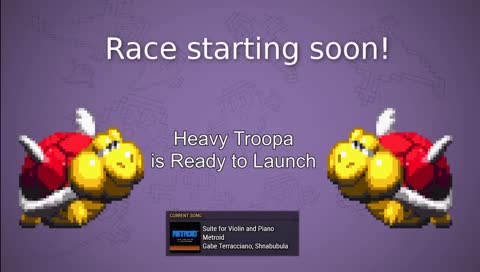
The Mystery Funhouse does a lot of different kinds of content; there are speed-run races of big games that are too big to fit in spaces like GDQ or normal Hotfix tournaments. There are blind speedruns of indie games, and there are to-a-goal speedruns of extremely difficult-to-speedrun games as well.
Now this is a bit more General Twitch than I normally recommend! But thanks to having a friend on commentary, I can feel a little more reassured that this place isn’t going to drop the occasional Heated Gamer Moment. It’s interesting stuff to watch, open for public submissions, and a good way to get into Speed Running in a position where the community are engaged and the stakes could not be lower.
Check it out!
Game Pile: Exalted
Exalted is a tabletop roleplaying game of mythic fantasy that positioned itself as the counterpoint to Dungeons and Dragons 3rd edition, made first by White Wolf and later by Onyx Path. Onyx Path have faithfully carried on the legacy of White Wolf’s work, and by that, I mean, Exalted started out bad and has maintained being bad.
Bad is a hollow word for media criticism, I know, but it’s good to set a tone. I want you to bear that in mind, because there’s going to be a lot of things that make this game sound awesome. This game has a faction of communist revolutionary furries who are gay for the moon. See? Right there, that’s something that’s either awful (kinda) or amazing (also, kinda).
This presents part of the problem of discussing Exalted: A list of things in Exalted sounds like praise for it! In a way, that’s amazing! It’s got a sentient stealth bomber that lives in a volcano! See? Just like that, you react with what and want to know more!
Plus, there will be pretty pictures, because Exalted has always employed some excellent artists who sometimes do amazing work, and if Bioshock Infinite has taught us anything, it’s that really excellent aesthetics can make it very easy for people to take you seriously even if your game is actually really bad.
Hold to that truth. No matter what it sounds like I’m saying, I’m also saying that Exalted is bad.
Exalted is amazing.
Continue Reading →Invisible Ink
I like this metaphor.
I’ve always liked invisible inks. As a young boy, my culture came through 1950s annuals and second-hand-store copies of adventure stories, where rather than having ‘arts and crafts’ techniques there were things like ‘be an international spy.’ This taught me knots (which I’ve largely forgotten but for a few handy ones) and cryptography (which I’ve largely forgotten but for a few entertaining ones) and because if you’re being a spy, you need some invisible ink.
And there were techniques about writing in lemon juice and writing in water and writing in dissolved metals and things that were, at some point in the 1950s, household items, and inevitably those instructions let me craft messages to put on paper, completely ignoring that as a child, in my tiny closed environment, there was literally nothing I could write on a piece of paper that the people around me would be interested in reading, let alone anything I needed to keep secret. Maybe they’d find one of my pieces of paper with moist lines of probably-dried-fluid on them, and decide it was time to get to the bottom of the kind of secrets a nine year old who literally never went anywhere but church or a small wooden box at school.
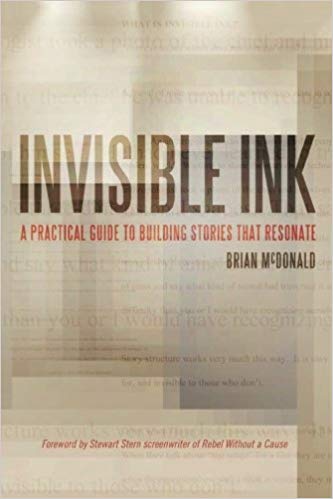
A friend did a writing course, just after the end of City of Heroes. There, he read the book Invisible Ink and took notes, sharing them with me, because I didn’t have a copy for the book. Since then, I’ve used the term invisible ink to refer to story elements that the story puts forwards, in ways that the audience can experience, but without ever needing to state.
Sometimes, you’ll see people confused by a story, because the story assumed you’d know something that the story never told you. That can sometimes be a sign of a disjointed story, and it’s worth considering why that happened. Sometimes, though, sometimes, it’s a sign that the audience can’t see the invisible ink. Why does this super queer text read obviously queer to queer people, and not to het people? Why does this Australian character enrage Australian audiences when they seem fine to Americans? What’s the appeal of Kath and Kim and why did it fail?
I think about this, because one, I think that the invisible ink we leave behind is more interesting than our deliberate choices. Two, and perhaps more damningly, is because I remember being without any of the way to see these invisible inks. Imagine getting into culture in the year 2001 without any idea at all about the common metaphors of film.
I’ve had to do a lot to construct myself, and a lot to understand invisible ink.
MTG: It’s Not Gacha
I try not to shoot from the hip on matters like these.
I try not, generally speaking, to do long-form articles about important topics where the subject matter is high impact and there are well-intentioned people who look uninformed to me. It’s a sure-fire way of wading into a complex situation where I contribute no actual value, just noise.
Plus, this is the intersection of Magic: the Gathering, game development, and human incentive systems, which I’m sorry to say I’m rapidly doing things that make me kind of expert on, even if I shy from being considered an expert. There’s a whole gulf of information between where I sit and where a lot of other voices on the matter sit, which can make me feel like I’m either talking over them (because they don’t know what they’re talking about, and don’t realise that) or that I’m getting into an extremely contentious fight (because they know what they’re talking about, and are presenting falsehoods and do not care).
Still, it’s April, it’s my month, you’re here on my blog so sit down, shut up, and learn why every time people compare Gacha to Magic: the Gathering I roll my eyes so hard it makes my skull ache.
Continue Reading →April is… Talen Month!
Since my birthday falls in April, this month’s theme, for our Story Pile and Game Pile is going to be me-centric media. Expect this month to be full of stuff that matters to me, things that I’m talking about because I want to talk about them, and for some reason or another I’ve chosen not to.
How’s that different than normal? Surely everything I put on this blog is out there because I wanted to. Not really: There’s a bunch of stuff I haven’t written about, because I think it’s a bit too niche, a bit too specific, or reveal or relate to something really specific about myself. This isn’t like Decemberween, where I spend a month non-stop listing good things I like and hope you will try. This is going to feature some of the awkward faves or the painful drags, times when I take a game I have a beef with to task, or maybe talk about how a tv series handles fascist cults from the perspective of someone who’s been in one.
Last year, I did an in-depth read of the Infinity Engine games I loved, and in the process talked about modding communities, and the way Planescape Torment informed my development and maturity.
Expect something like that.
And we’re going to look at some stuff that’s ugly. Some stuff that may not uplift you or may not make you happy, and which I would normally leave alone because it exposes too much of me, of who I know I am.
That said, here’s a real quick lightning round. You may be afraid I’m going to go in on any of these topics this month, and you might have to avoid my blog for fear of Dealing With These Topics, I have no intention of talking about Undertale and its associated media, The World Ends With You, or the New She-Ra. Maybe if someone wants to pay me to write about those topics, I will, but for now, I think these topics just aren’t generally interesting enough to warrant the potential emotional harm that my (admittedly sensitive?) readership want.
I will try to CW some stuff this month, but broadly, if you like Ranty Talen or Talen On His Bullshit, this month is going to try and be that. A month to give myself permission to kick things I like down the stairs and not worry too much about anyone being over-sensitive about But What If Talen Says A Mean Thing About A Videogame I Bought.
Story Pile: Lilo & Stitch
A measure, to some extent, of the quality of a work is the degree to which the moments that matter to that story stay with you. This isn’t my observation; it was first brought to my attention by Cracked when they asked a character (and by proxy the audience) if they could name a single line from the 2009 movie Avatar. Most people I’ve asked can’t, and this doesn’t seem to be atypical.
But this month, I’d like to look at some things that matter to me – in some cases, a lot – and rather than run down a bad (garbage, awful, not good, not interesting, waste of money) movie like Avatar for its failings, I instead want to speak to a movie for its virtues, and a movie that has given me a quote that I can bring to mind easily, and love deeply.
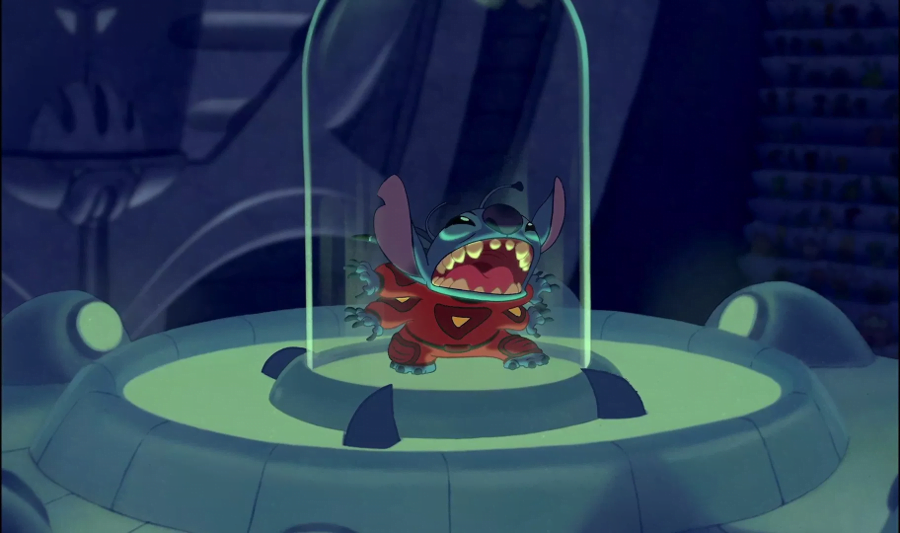
Let’s talk about Lilo & Stitch, a Disney family movie – that is, the best Disney family movie. Spoilers ahoy!
Continue Reading →